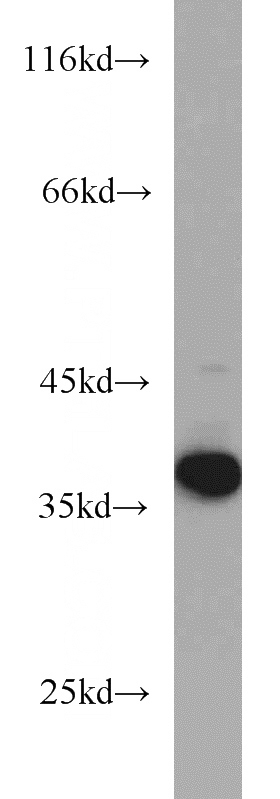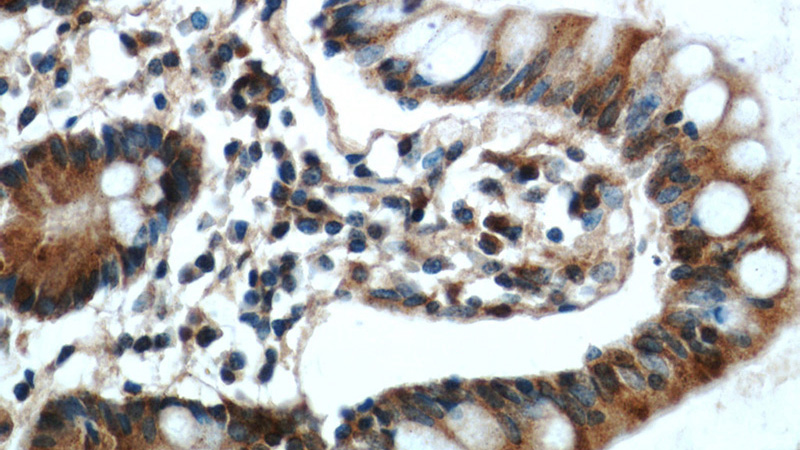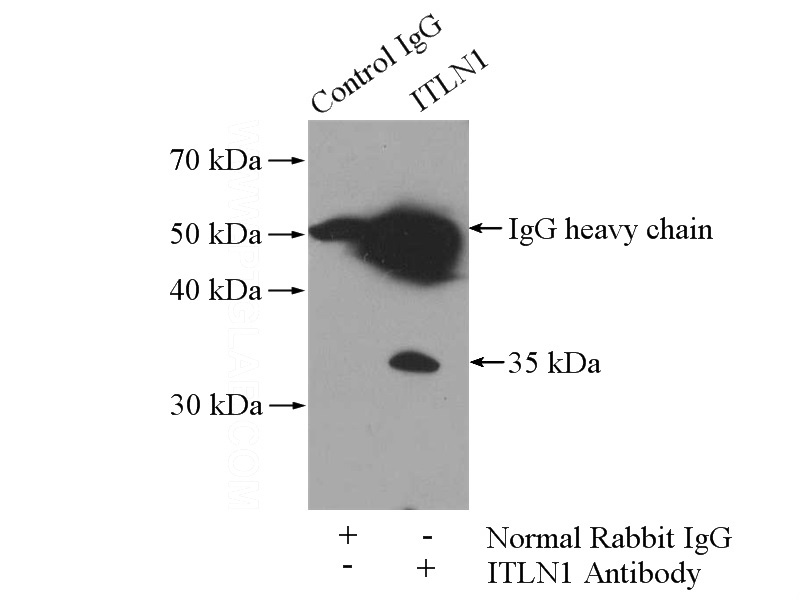-
Product Name
ITLN1 antibody
- Documents
-
Description
ITLN1 Rabbit Polyclonal antibody. Positive IP detected in mouse appendix tissue. Positive WB detected in mouse colon tissue, human heart tissue, human ileum tissue, mouse thymus tissue. Positive IHC detected in human small intestine tissue, human heart tissue. Observed molecular weight by Western-blot: 35-40kd
-
Tested applications
ELISA, WB, IHC, IP
-
Species reactivity
Human,Mouse,Rat; other species not tested.
-
Alternative names
Endothelial lectin HL 1 antibody; FLJ20022 antibody; Galactofuranose binding lectin antibody; hIntL antibody; HL 1 antibody; HL1 antibody; Intelectin 1 antibody; INTL antibody; ITLN antibody; ITLN 1 antibody; ITLN1 antibody; LFR antibody; omentin antibody
-
Isotype
Rabbit IgG
-
Preparation
This antibody was obtained by immunization of ITLN1 recombinant protein (Accession Number: NM_017625). Purification method: Antigen affinity purified.
-
Clonality
Polyclonal
-
Formulation
PBS with 0.1% sodium azide and 50% glycerol pH 7.3.
-
Storage instructions
Store at -20℃. DO NOT ALIQUOT
-
Applications
Recommended Dilution:
WB: 1:500-1:5000
IP: 1:200-1:2000
IHC: 1:20-1:200
-
Validations

mouse colon tissue were subjected to SDS PAGE followed by western blot with Catalog No:111951(ITLN1 antibody) at dilution of 1:300

Immunohistochemical of paraffin-embedded human small intestine using Catalog No:111951(ITLN1 antibody) at dilution of 1:50 (under 10x lens)

Immunohistochemical of paraffin-embedded human small intestine using Catalog No:111951(ITLN1 antibody) at dilution of 1:50 (under 40x lens)

IP Result of anti-ITLN1 (IP:Catalog No:111951, 4ug; Detection:Catalog No:111951 1:500) with mouse appendix tissue lysate 4000ug.
-
Background
ITLN1, also named as INTL, ITLN and LFR, has no effect on basal glucose uptake but enhances insulin-stimulated glucose uptake in adipocytes. It may play a role in the defense system against microorganisms. ITLN1 may be involved in iron metabolism. The expression levels of ITLN1 is significantly different between the GPG and PPG (p<0.05).
-
References
- Kim HJ, Kang UB, Lee H. Profiling of differentially expressed proteins in stage IV colorectal cancers with good and poor outcomes. Journal of proteomics. 75(10):2983-97. 2012.
- Wangkanont K, Wesener DA, Vidani JA, Kiessling LL, Forest KT. Structures of Xenopus embryonic epidermal lectin reveal a conserved mechanism of microbial glycan recognition. The Journal of biological chemistry. 2016.
Related Products / Services
Please note: All products are "FOR RESEARCH USE ONLY AND ARE NOT INTENDED FOR DIAGNOSTIC OR THERAPEUTIC USE"
